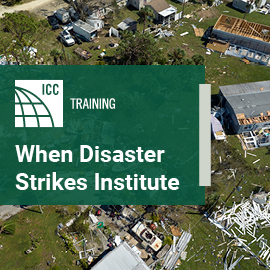Update on Texas Flash Flooding
On July 4, 2025, heavy rainfall overflowed the Guadalupe River in Central Texas, resulting in flash flooding. Tragically, more than 120 deaths have been confirmed in six counties and more than 160 people remain unaccounted for.
The International Code Council offers its heartfelt condolences to everyone impacted by this devastating event, especially to those mourning the loss of loved ones. We remain actively engaged with our Texas chapters and with federal, state and local agencies to respond to any calls for assistance. The Code Council is in contact with the Building Officials Association of Texas (BOAT) and is assessing ways to support them as they engage in recovery efforts across the state.
The Code Council and the Association of State Floodplain Managers support post-disaster utilization of building officials and floodplain managers through mutual aid agreements and other disaster aid networks to assist impacted jurisdictions and communities in need.
If you are a building official located in the affected areas and you need assistance with building code related issues, please reach out directly to us through your regional Government Relations representative for Texas, Rick Bluntzer.
Disaster Recovery Resources






